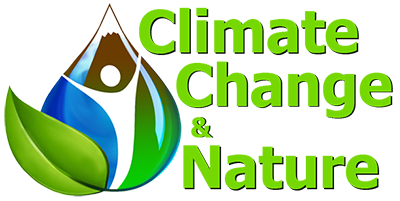The Arctic is experiencing disproportionately higher temperature increases compared to the rest of the planet, triggering a series of cascading effects known as Arctic amplification. This rapid warming is not only destabilising the delicate balance of the Arctic ecosystem, but is having profound implications for global climate patterns, human populations and wildlife. The phenomenon is largely attributed to positive feedback mechanisms that exacerbate the effects of greenhouse gas emissions. – European Space Agency (ESA) infographic (click image to be taken to their website)
The Albedo Effect—ice and snow
Recent global temperature surge intensified by record-low planetary albedo – Science, 05 Dec. 2024
Clean ice and snow have a very high albedo, that is, they reflect up to 90% of solar radiation back into space. Water is much darker, so it has a very low albedo, reflecting only about 6% of the incoming solar radiation and absorbing the other 94%, warming it much faster than then snow and ice (Fig. 2).

Warming over the past 40 years has led to a very large decrease in the amount of summer sea ice in the Arctic (Video 2). It’s not just the total area of cover that’s decline, it’s also the thickness of the ice, so the total volume of sea ice in the Arctic has declined 95% in the past 33 years. In Greenland, high altitude ice sheets are starting to melt. That lowers the altitude of the ice, which exposes it to more heating. The dark lakes that form on the ice absorb heat due to the albedo effect, leading it even more warming, and so on.
The overall result is that warming in the Arctic is warming 4 times faster than the global average (Fig. 4)(over the Barents Sea as much as 7 times faster), which continues to enhance the positive (warming) feedback loop.
Wildfires
As the climate warms, evaporation dries out vegetation, making it more prone to fires, something made all too clear in the 2025 Los Angeles fires. This triggers a range of positive (warming) feedback effects, depending on where the fires are located.
One feedback is the explosive growth of forest fires globally, in areas that have rarely experienced them. Fires are becoming so large that entire ecosystems are being destroyed, unable to recover because temperatures are now too high to support their recovery.
Wildfires reducing albedo in the Arctic
Every year, the wildfire season in the Northern Hemisphere (Alaska, Canada, and Russia) begins earlier, ends later, and is more intense.
One feedback effect is that the soot or ‘black carbon‘ that falls on ice as far away as Greenland (Fig. 6) reduces the albedo and enhances surface melting, which in turn speeds up the disintegration of outlet glaciers that hold back the massive Greenland ice sheet leading to increasing meltwater that increases the speed of rising sea levels. Large volumes of freshwater melting is also changing the ocean currents with multiple profound effects around the globe.
In addition to losing forest, fires in boreal regions are threatening to turn peat, which had once been a carbon sink, into a major source of atmospheric methane and carbon dioxide. The peat in this region is largely permafrost, but that’s now melting at an alarming rate, both from atmospheric warming and from increasingly uncontrollable forest fires melting the upper layers of the soil (Video 3).
Climate warming and drying has led to more severe and frequent forest fires, which threaten to shift the carbon balance of the boreal ecosystem from net accumulation to net loss, resulting in a positive climate feedback… This implies a shift to a domain of carbon cycling in which these forests become a net source—instead of a sink—of carbon to the atmosphere over consecutive fires. – Walker et al, 2019
Video3: As Arctic summers get warmer and drier, boreal forest fires are becoming more intense, meaning they burn deeper into the soil. (NASA)
The entire Canadian Boreal contains 307 billion tonnes of carbon…as much carbon as the world emits in 36 years. – Anthony Swift, Natural Resources Defense Council, Canada
According to the latest public records, the Canadian wildfires of 2023 have razed 18.5 million hectares of land to date – nearly triple the previous record. They released [an estimated) 2.4 billion tonnes of carbon dioxide. To put that into perspective, it’s three and a half times the annual emissions for all of Canada’s economy. – Radio NZ January 2024






